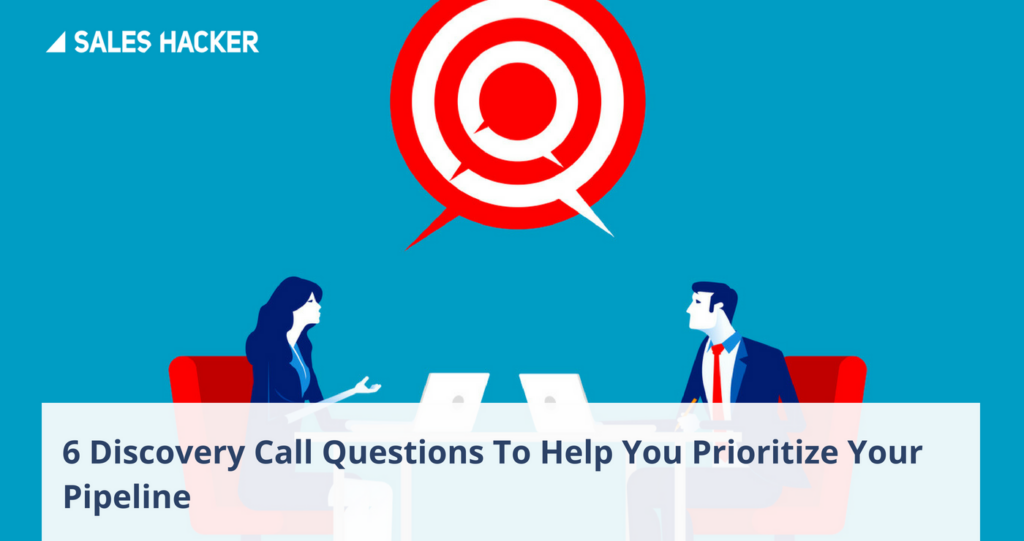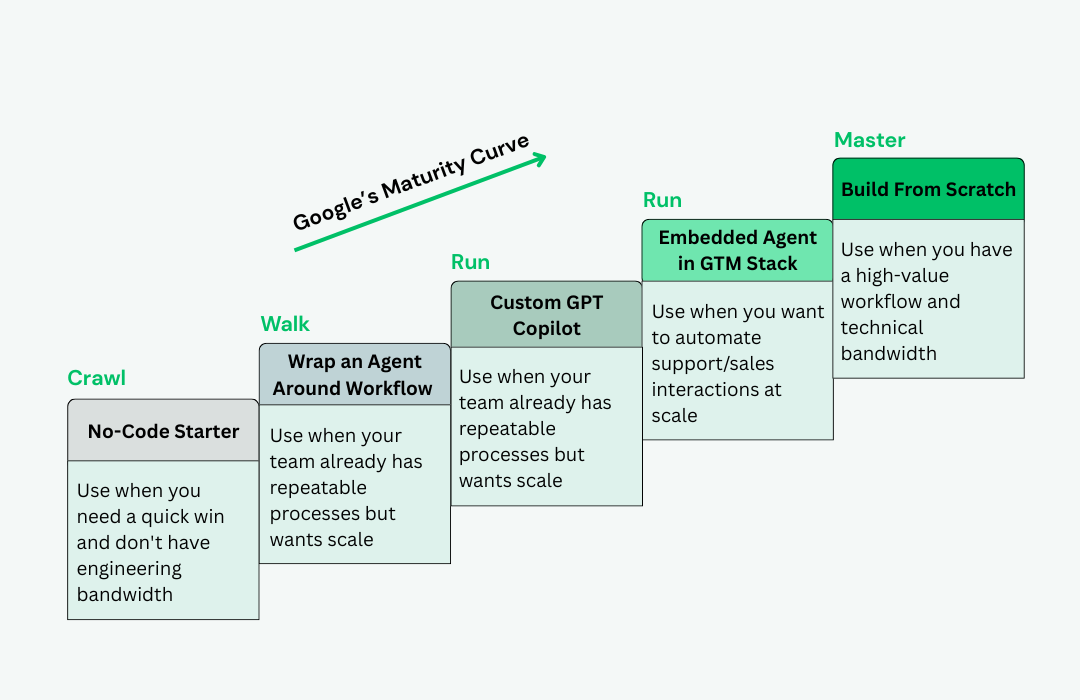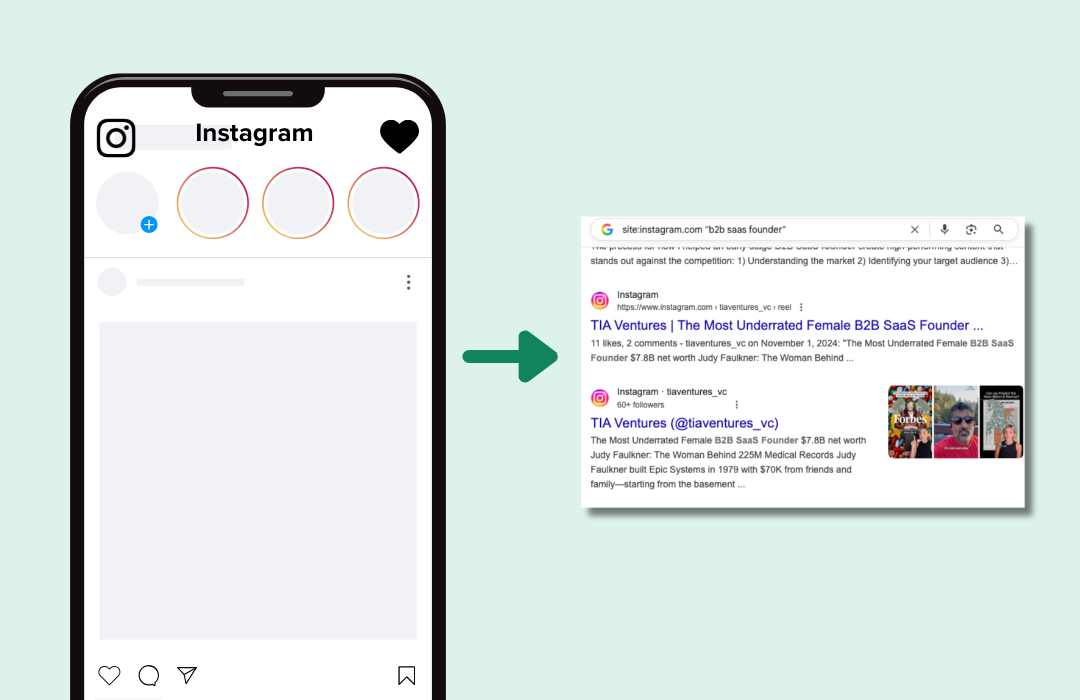In sales, it’s normal to spend hours rehearsing for an upcoming demo and fine-tuning the deck. But when it comes to the discovery call, many of us assume we can wing it. Think again. You’ll need a set of discovery questions planned out before the call.
It’s strange because the discovery call is how we uncover critical information early in the sales cycle. Details like use cases and a prospect’s fit for our solution help us prioritize our deals. As account executives, the discovery call is our first opportunity to talk to a prospect after they’ve been qualified by an SDR.
The risk of doing it poorly or not at all is getting stuck in “the land of no decision” with the deal and your quota on the line. You can try dragging both across the finish, but even the best salesperson can’t persuade a prospect to buy a solution and use it if it’s not a good fit.
That’s why it’s so important to ask the right discovery questions at this crucial step in the sales process.
What Is a Discovery Call?
A discovery call helps you gather information about the prospect by directly talking to them and asking them questions. Such information includes the prospect’s objectives, priorities, and pain points. With discovery calls, you can see whether you and the prospect are a fit for each other. Then you can decide whether you want to sell to them and how.
What Is the Purpose of Discovery Calls?
The main purpose of a discovery call is to determine whether you and your potential buyer are a good fit. In layman’s language, it’s an interview to understand your buyers’ pain points, goals, and priorities so you can effectively sell to them.
I consider the discovery call the most important conversation in the entire sales process. It sets the pace of your deal and determines how everything else unfolds in the sales process.
If you carry it out correctly, you’ll form an authoritative relationship with your prospect.
If you do it wrong, your prospect will ditch you and pick the next available option.
Related: 3 Discovery Call Questions that Unlock Amazing Potential
How to Run a Discovery Call
Running a discovery call takes more than just picking up your phone, dialing your prospect’s number, and asking a bunch of random questions.
Step #1: First and foremost, you don’t want to be ‘that’ salesperson who asks about things they could have easily found on the internet. Therefore, you’ve to prepare yourself prior and carry out pre-call research.
Step #2: After thorough exploration, you take a look at your call prep checklist. You can go ahead and write your own. Alternatively, there are several downloadable discovery call checklists available on the internet.
Step #3: The next step is to kick off your discovery pain by asking situational questions to gauge your buyer. These discovery questions are aimed at collecting background information on facts about your prospect.
Step #4: Unearth the pain. From the information shared by your prospect, focus on their pain points, challenges, and problems. If you’re on a video call, read your customer’s reaction and respond with an appropriate follow-up question.
Step #5: Dig deeper and intensify the pain. Since you’ve unraveled your prospects’ pain, find out how serious it is. If not, make them be by asking implication questions. Probe area of dissatisfaction and use SPIN selling to turn needs into sales.
Step #6: Paint a vision. Move away from frustrations and start building a perfect picture of how your solution will do away with the problem. You can use need-payoff questions to reinforce your products/services benefits and let the buyer see what they can gain by doing business with you.
Step #7: Talk about the next step before ending the call. A discovery call is a process, therefore when you come to closing, schedule the next step. You can use phrases like ‘On that note, I recommend the next step to be…’ or ‘Based on the information you’ve shared with me, the next step should be…’
Best Discovery Questions to Ask On a Call
I’ve compiled a list of 12 discovery questions to ask your prospects in an information gathering call. Let’s dive in and delve into each in detail.
1. What Initially Piqued Your Interest?
Whether you’re dealing with an inbound or outbound lead, this is a softball question that helps uncover your prospect’s motivations for checking out your product. It’s a friendly way of learning about your prospect’s challenges at the start of the call.
Some prospects may even give you in-depth answers that allow you to skip to more complex questions. Here’s an example of an answer I got:
“Our sales pipeline is light for next quarter and our CRO has asked me evaluate multiple vendors that can help us become more efficient in converting website visitors to qualified opportunities. We’re looking to make a decision on a live chat product by the end of this month.”
Pro tip: Learn how to conduct killer pipeline reviews with your team.
Since it’s a probing question, I’ve found prospects are willing to share information more freely. For inbound leads I tailor the question to ask, “What drove you to request a demo?” and if I’m chatting with a lead on Intercom, I rephrase my questions based on the pages they’ve visited, such as our pricing and solution pages.
If it’s an outbound lead, I ask, “Was there something specific in my outreach that piqued your interest?”
2. What’s The Problem You’re Trying To Solve?
Disqualifying leads is just as important as qualifying them. Not every prospect will be a good candidate for our product and to hit quota, we need to prioritize our pipeline and focus on prospects who can benefit from what we’re selling.
This question helps gauge a prospect’s fit for our solution. For instance, if the prospect is just “browsing” the latest tools on the market, that tells me they’re unlikely to move forward in the sales process and even if they do, it’s going to be dragged out. It’s always a good idea to learn how to walk away from a business deal.
3. How Are You Addressing This Problem Today?
Once you’ve determined what problem your prospect is trying to solve and the reason they took the meeting, it’s time to understand why they don’t already have a solution in place.
Is their current solution just not cutting it?
Has budget been the blocker to getting a solution in place?
Asking this question helps you learn more about your prospect’s internal processes. You’ll want to find out their current setup and what would be required to make your solution work. The last thing you want is to spend time forcing a square peg into a round hole.
4. How Are You Measuring Your Goals?
Peter Drucker famously said,
“If you can’t measure it, you can’t improve it.”
People buy software to solve problems but in order for your solution to be compelling, they need know what metric they want to impact. Let’s say, your prospect answers your question with:
“We measure our 10 sales reps on monthly revenue. Currently their quota is 70K per month and our lead conversion rate is 5%. If we increase our conversion rate to 8%, we can get an additional 5K revenue per month per rep.”
This is one of the most important discovery questions because it shows you how serious the prospect is about solving the problem. You can use their answer to drive urgency for the deal, especially if it starts to stall. You can point back to the data and highlight how every month they wait will cost them 50K in lost revenue.
Not having clear measurable goals is a big, red flag. If they expect to increase revenue but don’t know their lead conversion rate, it’s hard to establish realistic expectations for implementing your solution and doesn’t aid the handover to your customer success team.
5. How Far Are You Into Your Evaluation Process?
Understanding your prospect’s timeline and the competitors you’re selling against early in the sales cycle will have a profound impact on your win rate. It’s important to find out, are you the first solution they’re evaluating or the last? If you’re first into the deal, you can set the decision criteria for your prospect’s evaluation process and that gives you a big advantage.
If you’re not the first, then you need to be cognizant of the selling techniques your competitors might be using. For example, is their strategy to break down each of your solutions feature by feature? It’s important you approach the demo knowing what your product does well and critically, what your product doesn’t offer and why.
The goal of asking this question is to walk-away with those two key pieces of information: timeline and competitors. If you need to probe further, I suggest following up with the questions, “When would you like to be up and running with a solution?” and “Which other vendors are you currently evaluating?”
Also related: Using the Science of Perfect Timing to Improve Sales Outcomes
6. Are There Others Who Should Be Involved in this Decision?
According to HBR, the average number of people involved in B2B purchases has climbed to seven. Chances are the prospect who hops on your discovery call won’t be the only stakeholder in your deal. It might seem obvious, but it’s critical to get face-time with all the relevant stakeholders.
New account executives will often ask prospects, “Who’s the main decision maker?” This is a really easy way to irritate your buyer. You risk making them feel small, especially if they are the main decision maker.
A better approach is to ask, “Who else on your team will be involved in the evaluation process?” Or say, “Typically we invite everyone who’s weighing in on the evaluation process to the demo. Who should I include from your end?”
Also related: 10 Tips to Build Rapport Internally to Navigate Complex Deals
7. How Would You Benefit If We Help You Overcome These Challenges?
What is the value of the proposed solution to your prospect? Are they looking to solve the problem or exploit an opportunity? What changes to the company afterward? This may include financial changes, risk mitigation, resource, strategic position, etc.
Understanding these parameters helps you know the value they expect from the solution and how to align your services to match their expectations.
Alternatively, the answer could be very personal. Therefore, pose the question very subtly. Using the word ‘we’ is subliminal.
It is a way of tapping into the psychology of selling and sparking your prospect’s emotions without them knowing.
In short, it shows togetherness and your willingness to help them tackle the problem at hand.
8. Are There Other Items You Need to Take Care of First?
Having a problem to solve is typical. Excitement is also okay. But, the real question is whether it is a pressing issue or under ‘others’ in the priority list.
If something doesn’t have a strict time frame, it won’t be time-bound. This means that your prospect doesn’t have a reason to solve it immediately.
This discovery call question will help you determine how important it is and the key problem your prospects are facing. Who knows, you might even have an immediate solution to the problem at the top of their list.
Additionally, it gives you a timeframe for a successful sale. You’ll know the time you worked with before a successful sale.
9. What Are Some Alternatives You’ve Looked Into?
While this question seems like it’s aimed at revealing competitors, the probable answer you’re fetching for has nothing to do with competitors. Instead, you want to reveal whether or not they have an alternative way of solving their problem.
By unlocking these alternatives, you’ll be able to understand, dismiss and articulate the benefits and how to make your solution ‘the most valuable.’
10. How Do You Feel We Compare To Other Solutions You’ve Looked So Far?
Knowing how you compare to fellow competitors in the run is very crucial. For example, your prospect could answer this question by saying;
“Your solution is quite compelling. But to be honest the offer we were given by company X is much more compelling. Their tools are quite advanced and a good fit for us. Your offer is more inclined towards increasing current profit margins while we are looking to improve customer lifetime value for longer-lasting relationships.”
From the above answer, you’ll be able to depict why your prospect thinks your competitor is a better option, and insight on what they’re offering, the tools they are using, and more clarification on what exactly they are looking for.
Plus, it’s always better to be sure of whether or not you stand a chance in securing the sale.
11. How Does Your Approval Process Work If I Propose a Solution?
Before entering into a business deal and revealing the hows, take time and understand the steps to make the solution happen. This will give you a roadmap of what it takes for your prospect to approve your solution.
It will also give you an overview of your prospect’s approval process. Consider this a final test and attempt to extract more information from the prospect.
You can use the answer to this discovery question to determine whether or not you’re ready to go ahead and start a business deal.
12. What Would You Suggest as the Next Step?
This should be the last question in your discovery call.
At this point, you’ve understood your prospect’s timelines, you know all the parties involved in the decision making, competitors in the running, and the probable steps in implementing your solution.
What’s left is to make the proposed solution time-bound and know-how willing your prospect is to start working with you.
You’ll also discover what other risks, hurdles, people, or actions may delay this process further or stop it from happening.
Using Discovery Calls to Find the Right Fit
It’s the insights you gain and share on the discovery call that help you find prospects that are the right fit for your solution.
Remember in order to gain your prospects’ trust, you also need to add value.
For me, that means sharing relevant customer stories that tie the challenges my prospects are facing to what I’ve seen current customers accomplish.
The discovery call is a two-way conversation that sets me and my prospect up for success.







